LumberBaron's Brewer Marty Rapnicki
|
||||||||||
| Printer Friendly Story View |
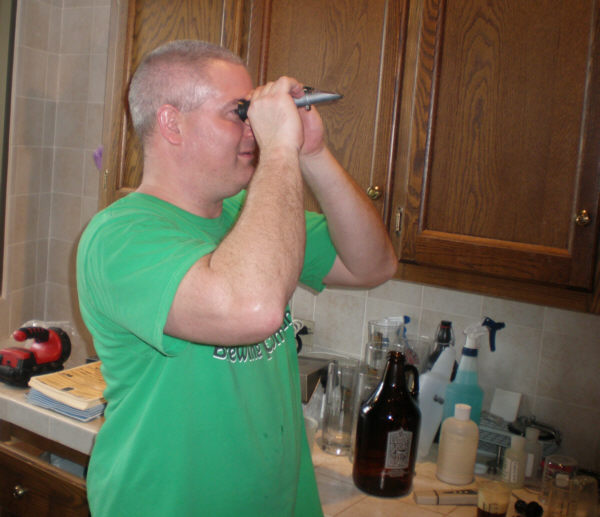
(MyBayCity Photo by Kevin Leahy)
As soon as I opened the front door of Lumber Barons Brew Pub on Midland Street the sweet smell of cooked grains and fresh hops enveloped me, it was brewing day at the pub.
Marty Rapnicki brews beer every couple of weeks.
The former home-brewer brews 465 gallons at a time now that he is the brewer at Lumber Baron's brewpub.
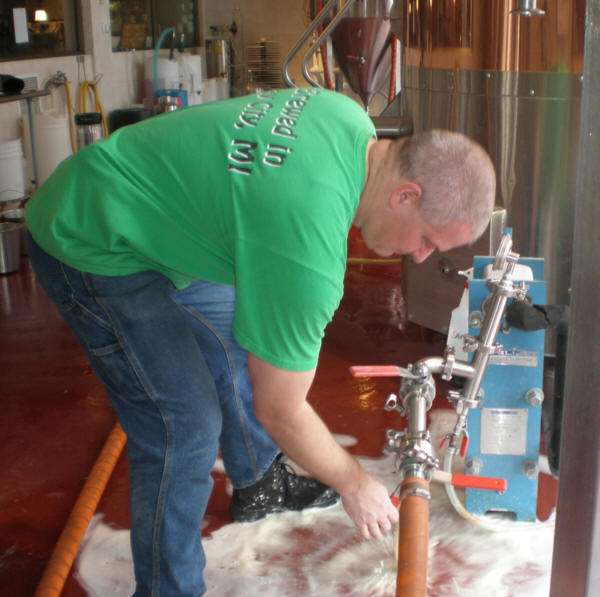
(MyBayCity Photo by Kevin Leahy)
The fifteen barrel system he brews with now would make any home brewer drool. According to Rapnicki, "its not the best but it gets the job done," he said recently when I interviewed him while brewing last week.
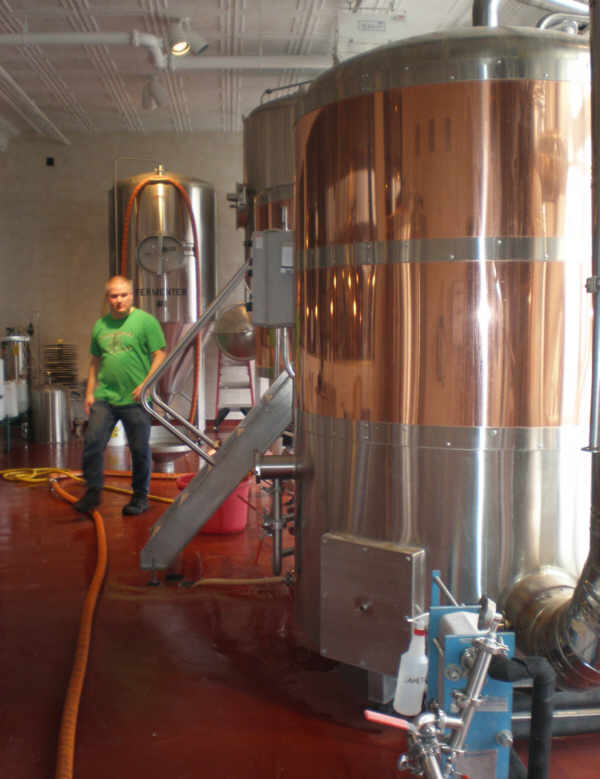
(MyBayCity Photo by Kevin Leahy)
Anyone who knows anything about brewing beer knows that beer is made with malted grain, barley, water, hops and yeast.
None of that changes when your brewing for a pub it just gets a whole lot bigger. Like 1200 lbs of grains, 25 lbs of hops, and about seven gallons of recycled yeast to kick the batch into fermentation.
Just like full mash brewing at home, pub-brewing takes just as long (about six hours), there are no short cuts at the brewery except that the equipment allows greater control over the process (with much cooler looking equipment).
By the way, the beautiful shiny copper kettles are just for aesthetics, "they are just jacketed with a thin sheet of copper for looks, everything we use is stainless steel," said Rapnicki.
A few quality control steps are utilized by Rapnicki to maintain consistency and a rapid ferment.
When starting his mash (mixing his grains and water) Rap adjusts the PH of the municipal water supply to get it into peak condition for the yeast to do its thing. ?.3 is perfect, yeast works best at 5-5.5 PH and beer is very acidic before fermentation. Bay City municipal water was measured at 8.0 PH a year ago," said Rapnicki just before testing the un-fermented wort with a PH meter.
He uses calcium chloride, gypsum or calcium sulphate to adjust the PH.
All the steel tanks are fitted with cooling jackets that are controlled with computers.
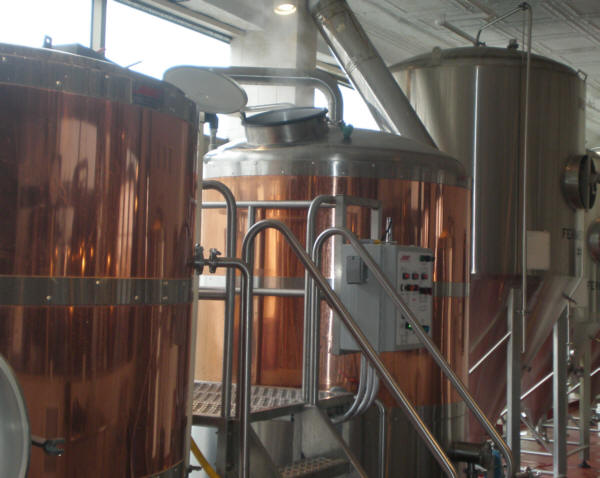
(MyBayCity Photo by Kevin Leahy)
The mash tun (grain tank) and the boiler have gas-fired burners with temperature controls. Rapnicki mixes his mash and holds it a pre-determined temp of 150-158 degrees for up to two hours then with a flip of a switch it drains through the perforated bottom to catch the spent grains and flows into the boiler.
He then adds just the right amount of hops to attain the proper bitterness and begins his two-hour wort boil. Wort is beer that hasn't had the yeast added to it yet.
In the mean time he ensures the conical fermenter he's going to transfer the wort into has enough viable (alive) yeast left in it from the last batch. He then adds the finishing hops towards the end of the boil to give the finished beer a good aroma.
The last step after the boil (boiling breaks down the starch's in the grains into sugars and releases the alpha acids and flavor from the hops)
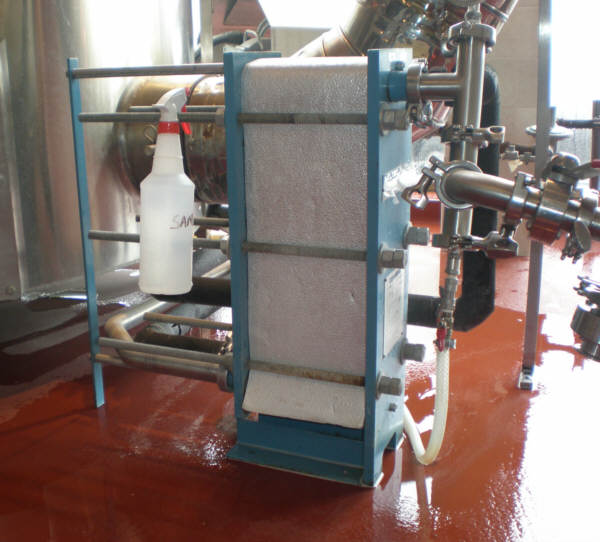
(MyBayCity Photo by Kevin Leahy) is rapidly cooling the wort to peak fermenting temperature.
He then turns on the whirlpool in the boiler to collect most of the spent hops and trub from the boil in the center of the tank and begins pumping out the wort. That last step is most critical in ensuring no off flavors and usually overlooked by many home-brewers, but Rapnicki has a built in chiller that in Ron Popiel's words, "he can set it and forget it." Rapnicki hooks up his two-inch hose to the cooler and pumps the wort into the anxiously awaiting yeast in the conical. A conical fermenter is shaped like a funnel and all the residual yeast and hop residue settles in the bottom of the tank while the wonderful nectar of the Gods is turning into beer above it.
"Temperature of the ferment is determined by the style of beer and yeast being used where Lagers ferment at 50-55 degree's for 10-14 days and Ales 60-75 degree's for 5 days while a Saison gets its fruityness from the yeasts at just over 80 degree's," said Rapnicki. Once the wort is fermented it is held at a steady temp to be conditioned four to eight weeks and then it is pumped over the bar and into the holding tanks in the cooler and carbon dioxide is pumped into beer to give it its fizz.
The remaining flocculated (settled out) yeast in the conical is partially drained of dead yeasts and Rapnicki leaves another seven gallons of "starter" for the next batch and the process is repeated 8 or 10 generations until the yeast begins to mutate and die off.
Some beers get filtered through a diamatacious earth filter to remove the remaining yeasts and polish the beer. Their best selling IPA as well as their Wheat and Red get filtered before being pumped to the holding tanks.
There you have it, a home brewer making beer on a grand scale, next week we will explore the skills required to be a brewer and how Marty Rapnicki ended up brewing for Lumber Barons.
As an editors note Lumber Baron's will be hosting Chef Mike's first beer dinner on April 2nd at 7:00PM with Black-Tiger Shrimp, Beef Barley Soup, Apple Stuffed Pork Loin and Crème Caramel Dessert all paired with appropriate Lumber Baron Brews.
The dinner is $35.00 for non Mug Club members and $30.00 for members and reservations are required by calling 891-0100.
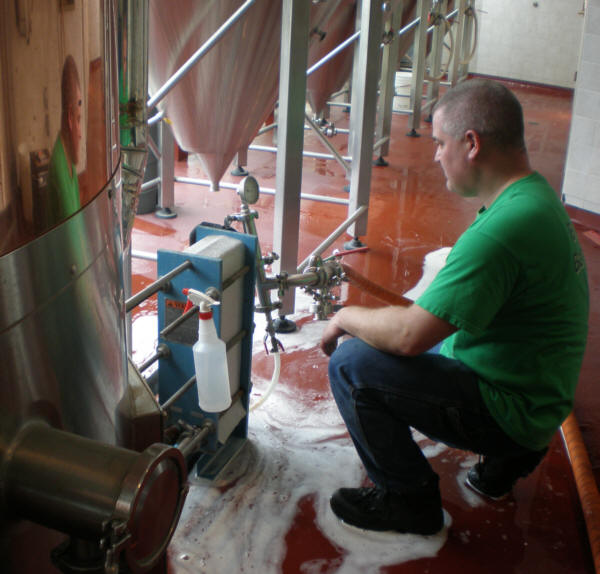
(MyBayCity Photo by Kevin Leahy)
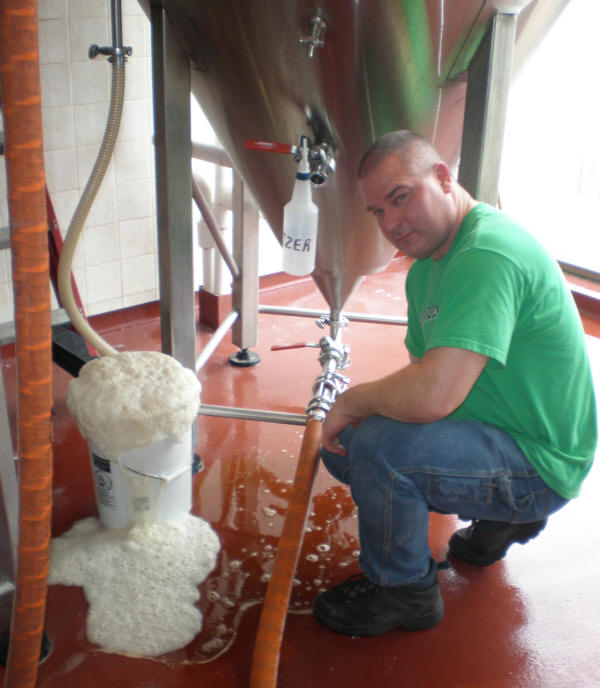
(MyBayCity Photo by Kevin Leahy)
| Printer Friendly Story View |
|
|

Kevin Leahy |
|
|
|
Printer-Friendly Story View
0200 Nd: 04-21-2024 d 4 cpr 0
12/31/2020 P3v3-0200-Ad.cfm
SPONSORED LINKS
12/31/2020 drop ads P3v3-0200-Ad.cfm


